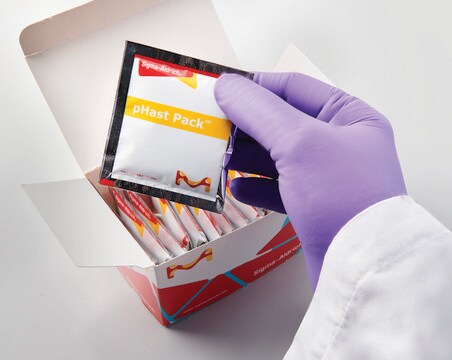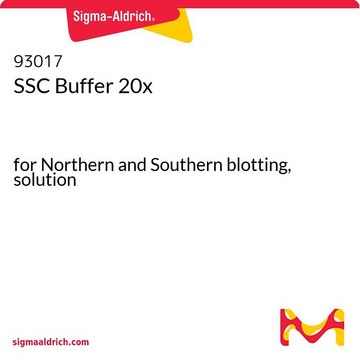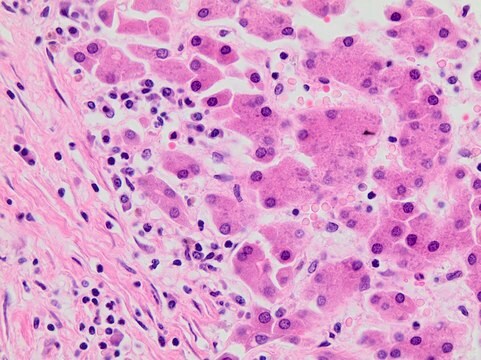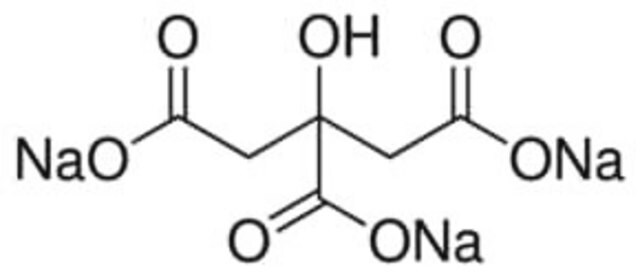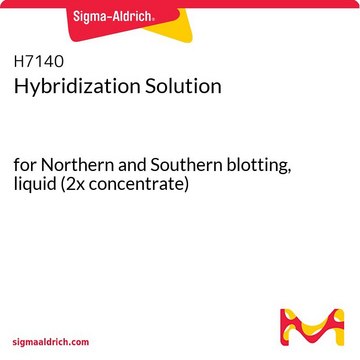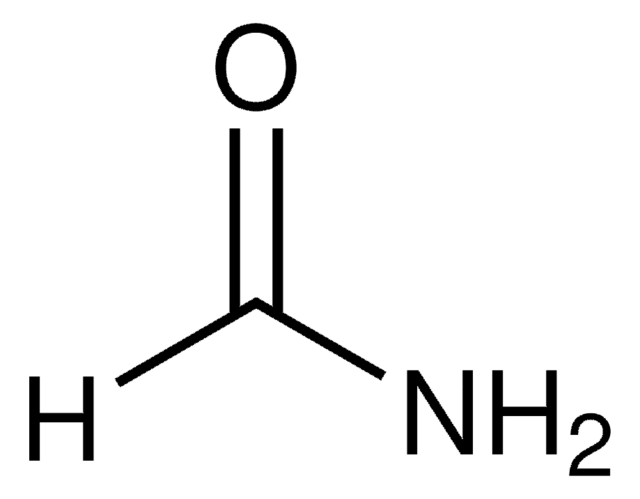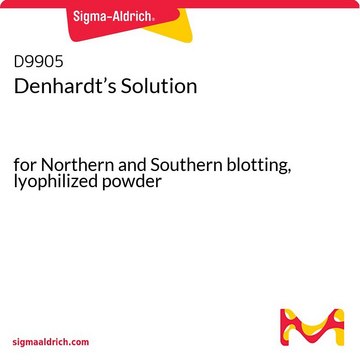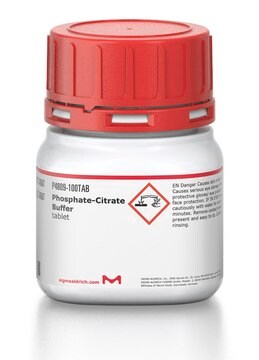S0902
SSC Buffer
for Northern and Southern blotting, powder blend
Synonym(s):
Saline-sodium citrate buffer
About This Item
Recommended Products
Quality Level
form
powder blend
pH
6.8-7.2 (20-25 °C, 263 mg/L in water)
solubility
water: 263 mg/mL, clear, colorless
foreign activity
DNAse, none detected
Endonuclease, none detected
Exonuclease, none detected
NICKase, none detected
RNAse, none detected
storage temp.
room temp
General description
Application
- Preparing nucleic acids for hybridization
- Hybridization buffer for Northern and Southern blots
- Washing buffer for Northern and Southern blots
Features and Benefits
- Multi-purpose use in hybridizations
- Easily reconstituted and diluted to any concentration needed
Components
related product
Storage Class Code
13 - Non Combustible Solids
WGK
WGK 1
Flash Point(F)
Not applicable
Flash Point(C)
Not applicable
Certificates of Analysis (COA)
Search for Certificates of Analysis (COA) by entering the products Lot/Batch Number. Lot and Batch Numbers can be found on a product’s label following the words ‘Lot’ or ‘Batch’.
Already Own This Product?
Find documentation for the products that you have recently purchased in the Document Library.
Customers Also Viewed
Protocols
An introduction to both Northern and Southern blotting, popular methods for the transfer of macromolecules to membranous support. This article also offers a Southern blot protocol and a northern blot protocol.
Our team of scientists has experience in all areas of research including Life Science, Material Science, Chemical Synthesis, Chromatography, Analytical and many others.
Contact Technical Service


